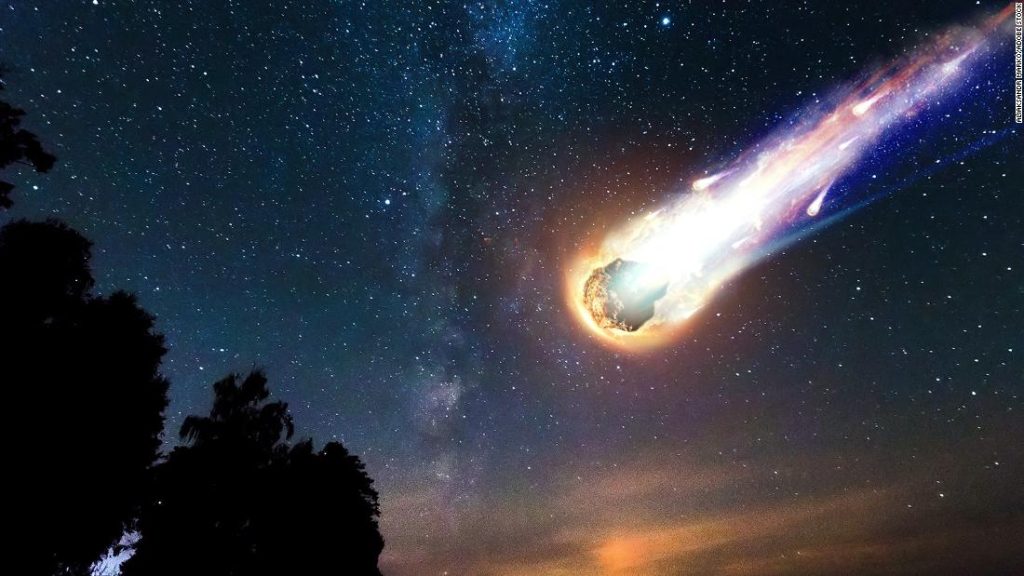Researchers have discovered the first known interstellar meteorite to hit Earth, according to A recently released US Space Command Document. An interstellar meteorite is a space rock that originates from outside our solar system – which is very rare.
The result came as a surprise to Amir Siraj, who recognized the body as An interstellar meteorite in a 2019 study he co-authored while he was an undergraduate at Harvard University.
Siraj was searching with Abraham Loeb, a professor of science at Harvard University, for Oumuamua, the first known interstellar object in our solar system found in 2017.
Siraj decided to go to the NASA Center for Near-Earth Object Studies database to find other interstellar objects and found what he believed to be an interstellar meteorite within days.
need for speed
The meteorite’s high speed is what initially caught Siraj’s attention.
The meteor was moving at a high speed of about 28 miles per second (45 kilometers per second) relative to the Earth, which is moving at about 18.6 miles per second (30 kilometers per second) around the sun. Because researchers measured how fast the meteorite was moving while on a moving planet, 45 kilometers per second wasn’t actually How fast it was.
Heliocentric velocity is defined as the velocity of a meteor relative to the Sun, and is a more accurate way of determining the orbit of an object. It is calculated based on the angle at which the meteor hits the Earth. The planet moves in one direction around the sun, so a meteor can hit the Earth head-on, which means opposite the direction in which the planet is moving, or from behind, in the same direction that the Earth is moving.
Since the meteor hit Earth from behind, Siraj’s calculations said the meteor was actually traveling at about 37.3 miles per second (60 kilometers per second) relative to the sun.
Then he determined the path of the meteorite and found that it was in an unbound orbit, unlike the closed orbit of other meteorites. This means that instead of orbiting the sun like other meteorites, it came from outside the solar system.
“Supposedly it was produced by another star, was expelled from the planetary system of that star, and it just so happened that it made its way into our solar system and collided with Earth,” Siraj said.
Difficulty publishing
Loeb and Siraj were unable to publish their findings in a journal because their data came from NASA’s CNEOS database, which does not reveal information such as how accurate the readings are.
After years of trying to get the additional information needed, they received official confirmation that it was, in fact, an interstellar meteorite, from John Shaw, deputy commander of US Space Command. Command is part of the US Department of Defense and is responsible for military operations in outer space.
“Dr. Joel Moser, Chief Scientist at Space Operations Command, the US Space Force service component of US Space Command, reviewed the analysis of additional data available to the Department of Defense regarding this finding. Dr. Moser emphasized that the velocity estimate reported to NASA is accurate enough to indicate that Interstellar path,” Xu wrote in the letter.
Siraj moved on to other research and almost forgot his discovery, so the document came as a shock.
“I thought we would never learn the true nature of this meteorite, that it was banned somewhere in the government after our many attempts, so seeing that message from the Ministry of Defense with my own eyes was a really cool moment,” Siraj said.
Second chance
Since receiving confirmation, Siraj said his team has been working to resubmit their findings for publication in a scientific journal.
Siraj would also like to assemble a team to try to recover part of the meteorite that landed in the Pacific Ocean, but admitted that it would be an unlikely possibility due to the sheer scale of the project.
Siraj said that if researchers could get their hands on the “holy grail of interstellar bodies,” it would be a scientific pioneer in helping scientists discover more about the world outside our solar system.
NASA and US Space Command initially did not respond for comment.

“Amateur organizer. Wannabe beer evangelist. General web fan. Certified internet ninja. Avid reader.”




/cdn.vox-cdn.com/uploads/chorus_asset/file/25550621/voultar_snes2.jpg)


More Stories
Watch a Massive X-Class Solar Explosion From a Sunspot Facing Earth (Video)
New Study Challenges Mantle Oxidation Theory
The theory says that complex life on Earth may be much older than previously thought.